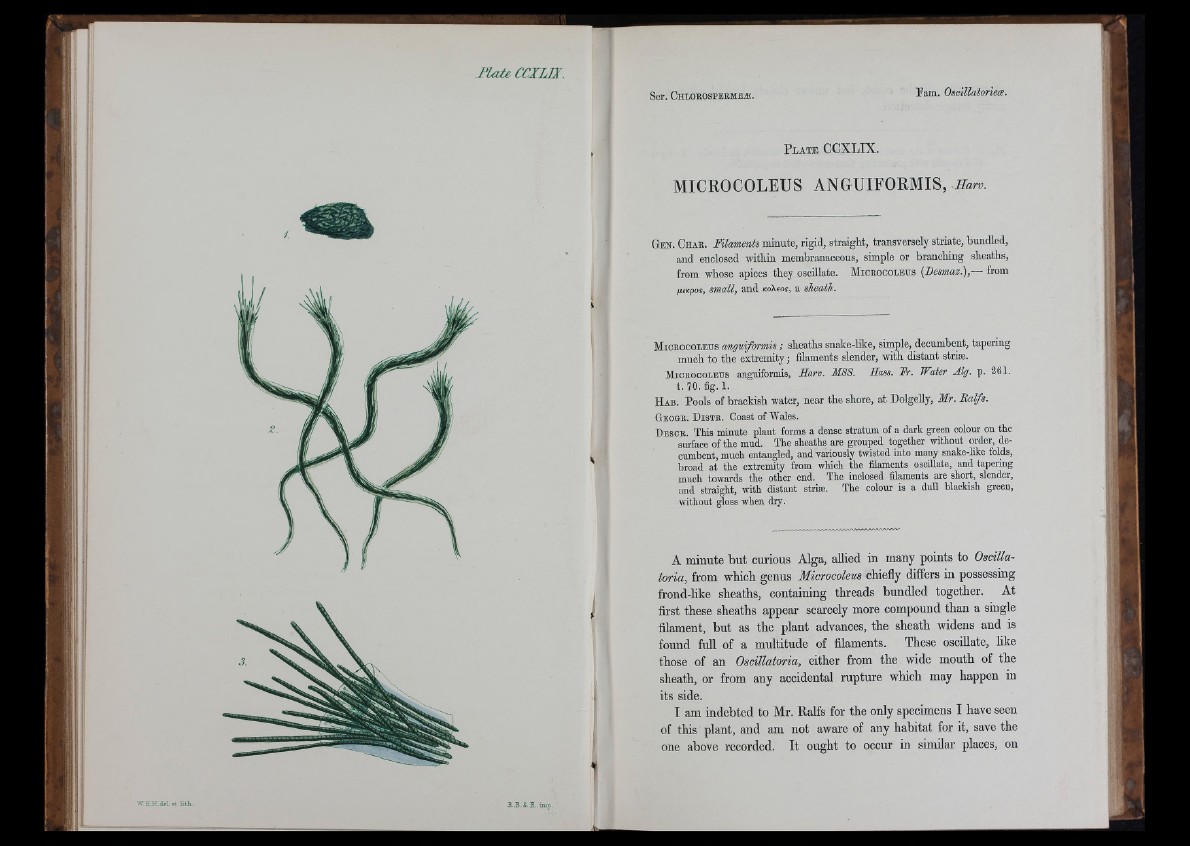
P la t e CCXLIX.
MICROCOLEUS ANGUIFORMIS,
Gen . Ch ar. Mlaments m in u te , rig id , s tra ig h t, tran sv erse ly stria te , b u n d led ,
a n d enclosed w ith in membranaceous, simple or b ra n c h in g sh ea th s,
from whose apices th ey oscillate. M io r o o o le u s [Desmaz.],— from
piKpos, small, a n d «oXeos, a sheath.
M ic e o c o le u s anguiformis ; shea ths sn ak e -h k e , simple, de cum b en t, tap e rin g
m u c h to th e extremity ; filaments slender, w ith d is ta n t striæ.
M ic e o c o le u s anguiformis, H a n . MSS. Hass. Fr. Water Alg. p. 261.
t. 70. fig. 1.
H ab. P o o ls of b ra ck ish water, n e a r th e shore, a t Dolgelly, Mr. B alfs.
G e o g e . D i s t e . Coast of Wales.
D e s c e . This minute plant forms a dense stratum of a dark green colour on the
surface of the mud. The sheaths are gTOuped together without order, decumbent,
much entangled, and variously twisted into many snake-like folds,
broad at the extremity from which the filaments oscillate, and tapering
much towards the other end. The inclosed filaments are short, slender,
and straight, ivith distant striæ. The colour is a dull blackish green,
without gloss when dry.
A minute but curious Alga, allied in many points to Oscillatoria,
from which genus Microcoleus chiefly differs in possessing
frond-like sheaths, containing threads bundled together. At
first these sheaths appear scarcely more compound than a single
filament, but as the plant advances, the sheath widens and is
found full of a multitude of filaments. These oscillate, hke
those of an Oscillatoria, either from the wide mouth of the
sheath, or from any accidental rupture which may happen in
its side.
I am indebted to Mr. Ralfs for the only specimens I have seen
of this plant, and am not aware of any habitat for it, save the
one above recorded. It ought to occur in similar places, on
WiRH.id. « lifiL.